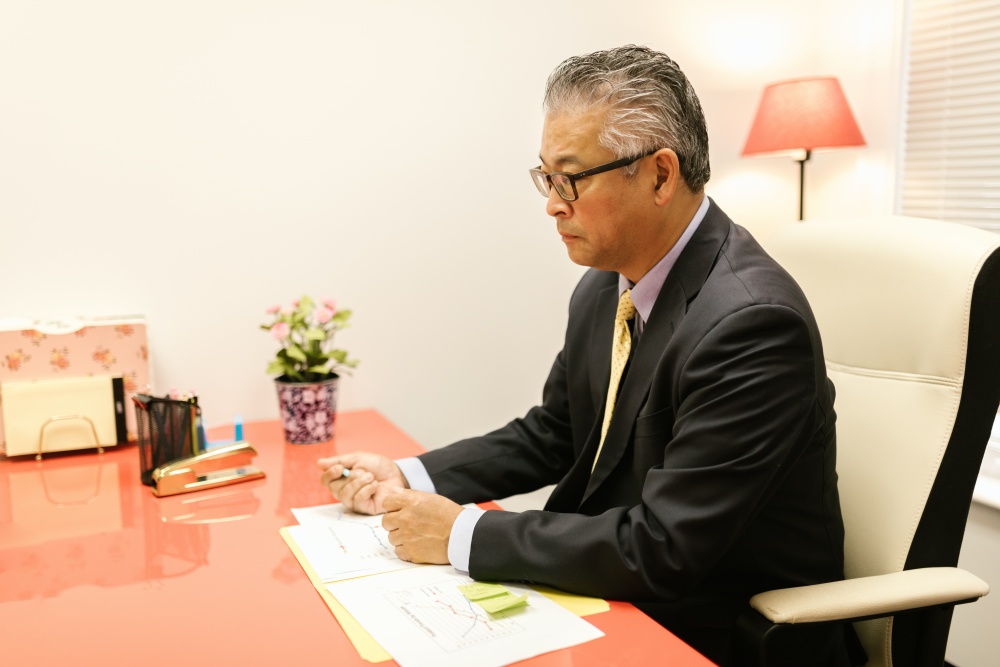Updated September 17, 2025
Japanese Work Hours and Systems: All You Need to Know
Work is work. No matter how much we like our jobs, at the end of the day, we just do it to enable a preferred way of life.
Especially in today’s world, where there’s a strong emphasis on knowing your rights and the limits of your duties at work (as I mentioned in my post on work-life balance in Japan), this sentiment rings true now more than ever.
So, as you can imagine, finding out what the legislation on employment entails and learning the work systems that are in place becomes especially crucial.
Knowing the limits of your service to the company also means that you can see “the light at the end of the tunnel.” Even if your profession is the most fun job in the world, not knowing what a potential work week looks like can easily suck the fun out of it.
This is why, in this post, I’ll talk about the Japanese work hour systems and explain what an average work week in Japan looks like.
I’ll also talk about the changes occurring in Japan’s workforce landscape today and touch on paid leave and other days off as well.
First, let’s see how many hours Japanese employees work in a typical workweek.
In this article: 📝
An Average Work Week in Japan: How Many Hours Do Japanese Employees Work?
Let’s get one thing straight: working in Japan isn’t nearly as daunting as it used to be.
One way or another, we’ve all heard the stories that Japanese people work long hours under hard conditions, but this is becoming less common nowadays.
Think of it this way: no matter where you go in the world, you’ll always stumble upon an old person who’ll tell you how they used to work crazy hours for little pay and that workers had no rights back then. It was just the way things were. Concepts like employee rights and work-life balance weren’t in the zeitgeist.
Luckily, today, just like in any other developed country in the world, work hours and workers’ rights in Japan are strictly protected by law.
If we look at the statistics alone, a survey by Clockify reveals that Japan’s work hours have seen a significant decrease since the 80s, as average annual working hours have dropped from 2,121 hours in 1980 to 1,903 hours in 2022.
To put things into perspective, this is a 10% decrease compared to the United States’ 5% decrease within the same period, and the current average in Japan is just a little over the United States’ 1,892 hours and leaves countries like Portugal, Greece, and Russia in the dust.
Of course, this isn’t to say that overtime doesn’t exist in Japan. In fact, Japan has historically had a problem with overtime, and while things have been improving, there’s still room to grow as full-time employees in more traditional employees still tend to work overtime.
This may not be instantly apparent by the numbers I provided, but the truth behind these numbers is slightly more nuanced. For one, one of the main reasons why the number of annual hours worked seems far better than the countries I mentioned above is the fact that the number of dispatch (派遣社員 haken shain) and contract workers (契約社員 keiyaku shain) in Japan have increased.
To learn more about labor contracts and employment types in Japan, check out this article.
While people in Japan used to mainly work full-time jobs, this has been changing in recent years, leading to a drop in total hours worked, which is based on full-time employment.
In addition, women in Japan historically haven’t been as prominent in the workforce, and those who worked mostly occupied full-time positions. As more women enter the workforce and women begin occupying roles in dispatch and contract-based jobs as well, many women now work shorter hours, which may lead to a decline in the total population’s work hours.
All in all, while overtime still exists in Japan, things have certainly been improving. While we’re on the subject, let’s see what the law says regarding overtime work in Japan to approach the topic in an informed manner.
Explaining Overtime
According to the Japanese Labor Standards Act, a full-time employee can only work for 8 hours a day and 40 hours a week in total. The law also stipulates that anything above these limitations is considered overtime and requires extra pay.
Those who’ve signed an employment contract here will already know, but overtime in Japan is agreed upon in a specific clause of an employment contract.
This clause regarding overtime is often called “the 36 clause” in Japan due to the fact that it stems from Article 36 of the Labor Standards Act and is sometimes called a “36 Agreement” in cases where it’s signed as a separate agreement.
Normally, overtime hours in Japan are compensated at a rate of 125% of the employees hourly wage. So, in other words, you get an extra 25% on top of your normal wage. In cases where the overtime hours are late-night hours, which is anytime after 10 PM, you’ll be compensated at a rate of 150% of your hourly wage instead.
What’s more, this rate increases when the overtime work coincides with a public holiday. In that case, you get an extra 35% (135% of your normal wage), or for late-night work, an extra 60% (for a total of 160% of your normal wage).
However, the reality of this is a bit more complicated, as there are various overtime systems in Japan that can allow the employee to avoid having to pay the increased 25% pay in certain cases, as I explained in my post on overtime. Let’s explain these briefly before we move on.
Predetermined Overtime (“Kotei Zangyo” or “Minashi Zangyo”)
While the Labor Standards Act states that any work that’s over 8 hours a day and 40 hours a week is considered overtime in the case of full-time employment, the law also stipulates various ways employers can handle overtime pay. This is why — in some systems — an employee may get the same pay even if they do extra overtime work.
The main system that allows companies to avoid paying extra for overtime is the “fixed overtime system”. It’s also called the Minashi Zangyo (みなし残業) or Kotei Zangyo (固定残業) system. To use this system, the employer has to specify it in an employee’s contract.
Under Minashi Zangyo, you essentially have a set number of overtime hours “built-in” or assumed in your contract. For example, you might have 45 hours a month of Minashi Zangyo specified (the number of hours varies). This means that your agreed compensation covers up to 45 hours of overtime work.
So you don’t earn extra overtime pay for the first 45 hours of overtime work. But you don’t need to do overtime to get your full salary. If you only work 40 hours a week (i.e., zero overtime), you’ll still get the full amount agreed to in your salary. Having a Minashi Zangyo clause in your contract doesn’t mean you have to do overtime.
So, while this system isn’t necessarily bad, keep in mind that you won’t be compensated according to the 25% rate stipulated in the Labor Standards Act unless you exceed the predetermined overtime hours. In other words, you’ll only receive the extra overtime pay for hours worked beyond your monthly “built-in” hours.
Also, remember that the law limits the overtime work an employee can do, even in a predetermined overtime system, by 45 hours in a month and 360 hours in a year. In any case, keep in mind that — under normal circumstances — an employee isn’t allowed to do more than 15 hours a week.
However, if the company signs a 36 agreement with special provisions with the workers' representatives, overtime work of less than 100 hours per month and up to 720 hours per year is allowed. However, the average overtime hours for all consecutive months between two and six months must be less than 80 hours.
A 36 agreement is usually signed with a representative rather than individually with each worker. If the company has adopted this system, I recommend checking the fixed overtime hours when you sign the employment contract in advance.
Generally, the fixed overtime system is often introduced for creative/sales positions and is usually set between 20 and 45 hours per month. Fixed overtime hours above 60 hours a month are higher than usual, so be wary of any company that offers such a contract.
Contract workers (契約社員 Keiyaku Shain) or dispatch workers (派遣社員 Haken Shain) are covered too, but if they work as freelancers on an outsourced basis, the Japanese Labor Law and the 36 Agreement don’t apply.
Outside of full-time work, there are various time systems adopted by local and foreign companies. So, let’s now take a look at some other work-hour systems that are prominent in Japan.
Exploring Japanese Work Hour Systems
While the Japanese Labour Standards Act establishes that a regular work schedule is 40 hours weekly with a maximum of eight hours a day, this is accepted as what is known as a fixed-time schedule. In addition to this, the law establishes other time schedules, namely modified, full flex time, and flex time with core hours systems.
The Modified Working Hour System
As I said, in a regular, fixed-time schedule, an employee can only work 40 hours a week and eight hours a day at the maximum. However, some jobs require more flexibility in this regard, as they may require considerably more or less work during certain periods of the year or month.
In order to remedy this, the Labor Standards Act set forth a time system called the modified working hour system.
According to this system, employees can work more during certain times when business peaks, and this isn’t considered “overtime,” nor does it require extra pay. That said, this system also requires companies to keep their employees’ average work hours under the 40-hour weekly limit.
Essentially, the modified working hour system can be adopted in predetermined periods of time, be it in an annual, monthly, or weekly schedule. In those periods, companies adopt varying schedules for their employees — depending on the workload — as long as the weekly average is below 40 hours.
In the monthly modified work schedule, the company predetermines a period up to a month, and their employees can work more than 40 hours in a week or 8 hours in a day as long as they keep the weekly average below 40 hours.
Lastly, in the week-based modified working hours, employees can work for up to 10 hours a day instead of the eight-hour limit. However, in this system, the weekly work hours of the employees should be below 40 hours, and the system can only be adopted by retailers and inns/restaurants with less than 30 employees.

Full Flex-Time System: Yes, You Can Have It All
The full flex-time system is another work-hour system that’s stipulated under modified working hour systems in the Japanese Labor Standards Act. It allows employees to adjust their work hours depending on the current workload as long as they meet a certain work hour quota in a set period of time.
You may see this system also referred to as the “full flex-time system” or “super flex-time system,” as there’s a more restrictive version of flex time, which I’ll also explain below. Alternatively, some may also refer to this system as the “discretionary labor system,” as the Labor Standards Act calls it a “system of discretionary working hours.”
I talked about flex time in another post extensively, but essentially, it involves employees deciding for themselves when to start and finish work during the day, as long as they don’t fall behind on tasks and meet the total hours stipulated in — usually, but not always — one-month periods.
According to the Labor Standards Act, the total work hours can be predetermined for up to three months in advance, and the employees are free to work however they like as long as they meet the predetermined quota in this period.
Unlike other systems, the full-flex time system allows employees to work whenever they want. In cases where working from home is a possibility, employees can even choose to put in their hours late at night should they decide to spend their daytime running errands and attending to personal matters.
This system is especially popular among tech companies and companies of foreign origin, but it’s being embraced more and more by other companies as well. Another system that’s slightly more popular is “flex-time with core hours,” which offers a compromise between the fixed and the full-flex schedules.
Let’s take a look.
Flex Time With Core Hours: The Best of Both Worlds?
While working on full flex-time is a fairly common practice in Japan, the freedom-first approach of the system can be hard to manage by certain companies. So, as a result of this challenge, many companies adopt a time schedule that’s quite literally a compromise between a fixed-time schedule and a full-flex time schedule, which is flex time with core hours.
Basically, what this means is that, while employees are still free to work as much as they want during the day, all employees must be working between set hours.
For instance, if you’re planning on doing a seven-hour workday, and the core hours of your company are between 12:00 and 16:00, you’re required to put in the four hours of work in this predetermined period, and you’re free to work the remaining three hours whenever you want.
A big reason why flex time with core hours exists is that it allows all employees to be “present” during certain hours of the day so that meetings and other sorts of communication won’t be affected.
This time schedule is especially well-embraced by companies with lots of remote workers who work from other countries in different time zones. Speaking of which, if you’re interested in remote work opportunities in Japan, you can check out my post on 8 companies with “worldwide remote OK” policies in Japan right after this.
Fixed Work Hours: The Old Reliable
While the work-hour systems I mentioned above have recently been gaining popularity, this tried — and somewhat true method — of working is still very much prominent in Japan. I’m talking about the old reliable: the fixed-hour system.
Before defining any other systems, the Japanese Labor Standards Act stipulates that a regular work week can’t be longer than 40 hours with an eight-hour daily limit. This is referring to the fixed time system, as we’ve already established that other systems can very well allow for longer hours than this under specific conditions.
Of course, while the fixed work-hour system establishes that a work day can be no longer than 8 hours, this only refers to the total hours worked. In a workplace that works on fixed hours, a full work day is actually 9 hours, as it also includes a mandatory one-hour midday break.
Keep in mind, however, that if the daily hours worked are six instead of the usual eight, the mandatory break is only required to be 45 minutes.
Paid Time Off: Everybody Deserves a Vacation
Working hours are important, surely, but what’s more important is the time you take off from work. So, let’s now take a look at the legislation regarding vacation days, paid time off, and other days off.
For starters, what you need to know is that the regular work week is six days in Japan. So, legally, you’re entitled to at least one day off weekly. However, while this is the legal minimum, most companies give two vacation days (usually Saturday and Sunday) to their full-time employees.
In addition, the law also sets forth that employers must provide 10 days of paid time off for each employee who’s been working for six months at a company. After the first six months, the employee is entitled to increasingly more PTO days with each passing year of employment at a company.
For instance, if you’ve entered a job that promises a legal minimum of 10 days, you’ll be able to use your 10 days as soon as you complete your first six months. Once you reach the 1.5-year mark, which is one year after the first six months, you’ll then get 11 days of PTO. After this:
A year later, once you finish 2.5 years of employment, you get 12 days of PTO.
Once you finish 3.5 years of employment, you get 14 days of PTO,
Once you finish 4.5 years of employment, you get 16 days of PTO,
Once you finish 5.5 years of employment, you get 18 days of PTO, and
Once you finish 6.5 years of employment, you reach the legal limit of 20 days of PTO.
While the legal minimum is 20 days after 6.5 years, it’s up to your employee to provide you with more, of course. At the end of the day, it all depends on the company.
One thing to keep in mind with PTO days is that while your accrued days can roll over to the next year, the law only requires companies to do so for two years. Your company may allow you to save up your PTO days for longer than this, but in any case, the law requires all employees to take at least five paid days off each year.

Work Hours in Japan for Part-Time Workers, Students, and Other Non-Regular Employees
The work schedules I’ve covered so far all apply to full-time workers, but not everyone works a full-time job. In the age of mini-jobs, many people work part-time, so let’s take a look at what the work hours look like for these jobs according to the Japanese Labor Standards Act.
I talked about this in my post on navigating job contracts in Japan, but unlike seishain, or full-time employment, students' and part-time employees’ employee rights are governed by different rules.
For instance, as a student working a part-time job, you’re only allowed to work for 28 hours a week at the maximum.
If you’re not a student and have a part-time job, however, you can legally work up to 35 hours a week.
As for another non-regular employment type, which is dispatch employment, the regular legal limit of 40 hours still applies, but the only limitation is that a dispatch worker (派遣社員 haken shain) can’t work at the same company for more than three years.
In addition to these exceptions, the Japanese Labor Standard Act sets forth a different rule regarding the work hours of high-level professionals.
Work Hour Limitations for High-Level Professionals
While it’s not a separate employment type, the Japanese Labor Standards Act has separate clauses regarding the work-hour limitations of high-level professionals. According to the Act, high-level professionals are defined as workers who engage in:
Development of financial products,
Asset management,
Trading of securities, etc.,
Investment advice,
Research analysis and research and development activities.
However, in addition to this requirement, the act also states that the annual salary of a high-level professional can be no less than 10.75 million Yen.
If both of these conditions are met, the high-level professional employee is no longer bound by the legal limit of 40 hours stated in the Labor Standards Act. In a similar fashion, the employee also won’t be restricted to working eight hours a day.
Keep in mind that, as this is an exception with serious implications, the law requires the employer to submit an application to the Labor Standards Inspection Office in order for an employee to be considered a “high-level professional.”
What Does a Regular Work Week Entail for a Japanese Employee?
You’re now familiar with all of the work-hour systems that are in place in Japan, but as a foreigner, you may also need an introduction to what a regular work week looks like in Japan if you’re a newbie, which is perfectly fine.
While a regular work week isn’t all that different in Japan compared to the U.S. or many European countries, it may still be useful to introduce the main pillars of daily work life in Japan. Here’s a taste of what you can expect.
Commuting to and From Work
This may especially feel different if you’re from the United States, where it’s common to use personal cars instead of public transport, but much like many European countries, commuting to work via public transport is a big part of daily life in Japan.
Especially in the big cities of Japan such as Tokyo, Osaka, or Kyoto, commuting to work via train and other means of public transport is quite common, which means that the rush hours are to be taken seriously.
While it may feel strange at first, the crowded trains during rush hours are a big part of daily life that you’ll eventually come to embrace. Japan is a well-organized country with a deep culture of respect and a tendency to avoid inconveniencing others, so you’ll find commuting to work in packed trains much less daunting once you get the hang of it.
Socializing With Coworkers
This may sound a bit odd, considering it’s not really a requirement, but socializing with your coworkers is still a big part of daily work life in Japan.
Of course, when I say socializing, I’m not talking about simply chatting next to the watercooler but having lunches, dinners, and drinks with your coworkers. I talked about this extensively in my post on Japanese work culture, but the concept of nomikai is a great example of this.
A nomikai is basically having drinks with coworkers after work, but it’s not like the happy hour you may be accustomed to at corporate jobs, where you can drink at the office after certain hours. Instead, a nomikai is usually held at an izakaya (a traditional small Japanese pub/restaurant) and is a proper event that’s completely distinct from regular work hours.
Similarly, there are other traditional social events among coworkers as well, like bonenkai, which is an end-of-the-year party that serves as a “farewell to the previous year.” Then, there’s also hanami, an outdoor picnic-like event for enjoying the cherry tree blossom season.
As these are traditional events, you’re more likely to come across them in companies that are on the traditional side, but they’re not uncommon among modern tech companies as well. I talked about all of these traditional office get-togethers in my post on teamwork in Japan in greater detail if you want to learn more.
Still, even if your company doesn’t have the usual nomikai or bonenkai, having lunch with coworkers is still fairly common. While it may come across as “forced fun,” keep in mind that this is just a Japanese “team-building” method meant to create “harmony” among employees.

Modern Approaches to Japanese Work Hours: Popular and Emerging Concepts
As you can see, working in Japan really isn’t all that different from working elsewhere. There may be some nuances regarding the systems in place, but the average work hours stay around the 40-hour range nonetheless.
While I’ve provided you with a pretty detailed picture of the work landscape in Japan as far as work hours go, it wouldn’t be complete without taking a look into the future. So, as I conclude this post, I’d like to share a few insights regarding the future of work-hour systems in Japan and explain emerging trends.
For starters, while the norm regarding the work week is still five days, there’s a good possibility this may start to change in the future.
As you may have already heard, there are already talks of a four-day workweek around the globe. Businesses are experimenting with new work hours and schedules, and we’re seeing interesting outcomes as a result of this.
For instance, the word has recently spread that Microsoft has been experimenting with a four-day workweek. As a result, the company has reported that the one-month trial has yielded quite the positive outcome, as productivity has seemed to increase by almost 50%, and costs have decreased significantly.
While this is only an experiment, it’s not too far from reality, as the tech industry in Japan is quick to adopt new world trends, just as it has done with remote work.
Even if the work-hour systems may not change just yet, many Japanese companies in the tech industry have implemented remote work policies efficiently. I talked about this extensively in my post on companies that allow work from anywhere in Japan.
Besides, many modern tech companies in Japan, like the ones that are featured on the Japan Dev company list, offer much more flexible work arrangements. These companies offer great work conditions and hours and are all personally vetted by the Japan Dev team.
All in all, as you can see, it doesn’t take much to realize that Japan’s work conditions are competitive and are improving by the minute. That said, this change is mostly prominent in the tech and IT-related industries, but other sectors seem to be taking notes as well.
References:
Get Job Alerts
Sign up for our newsletter to get hand-picked tech jobs in Japan – straight to your inbox.








